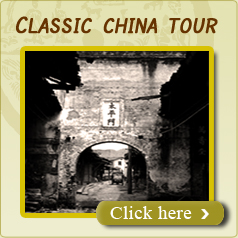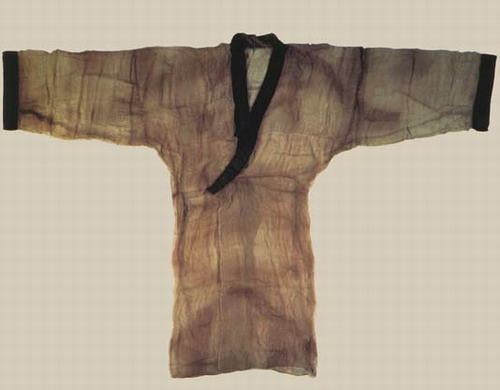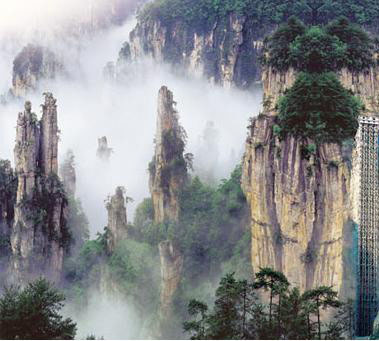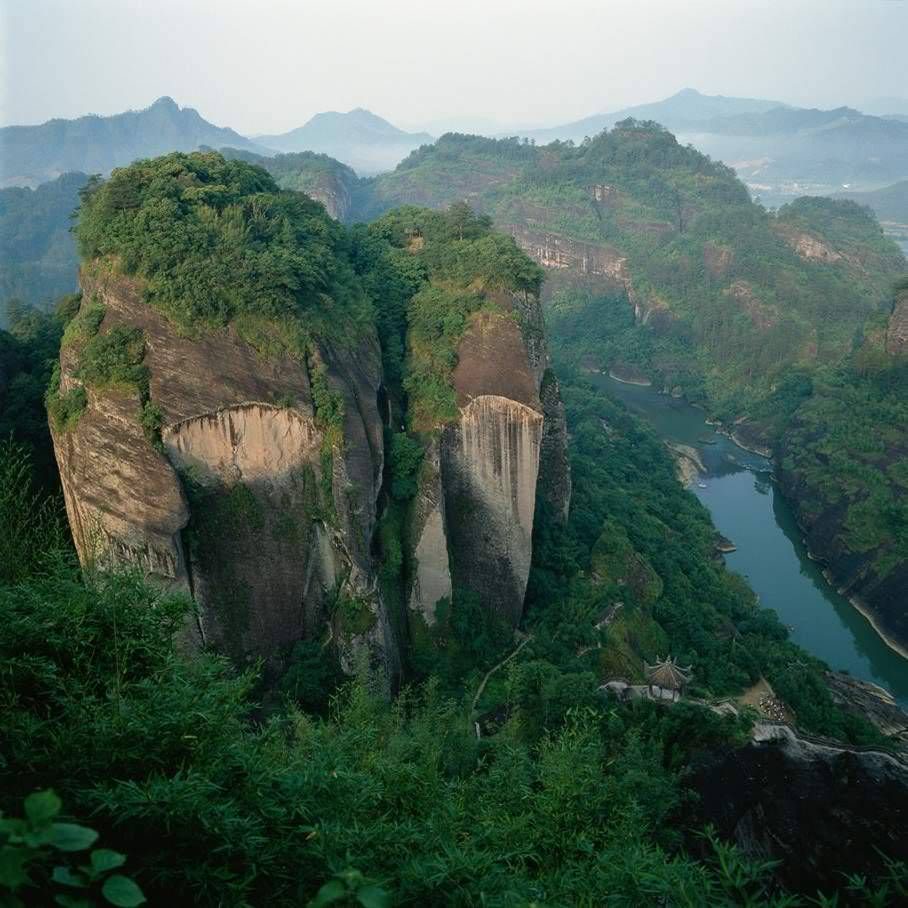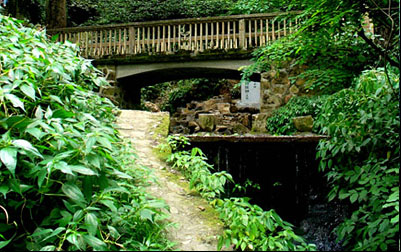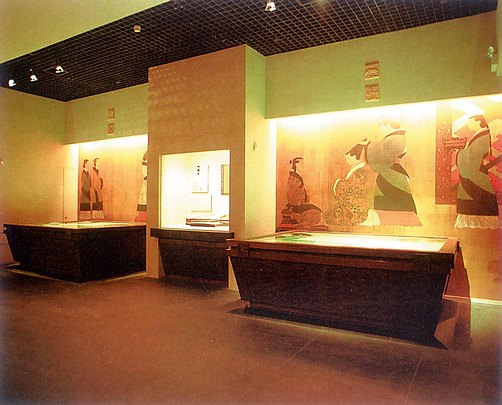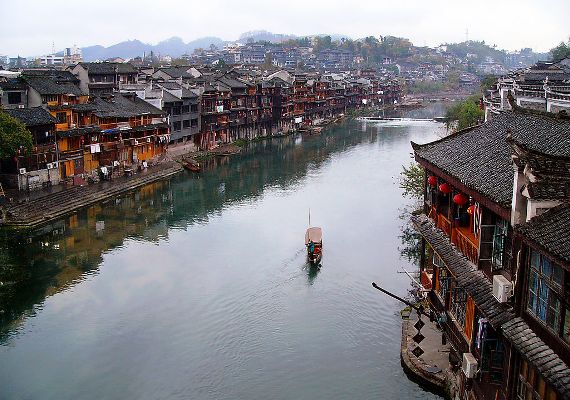Fenghuang Scenic Spots
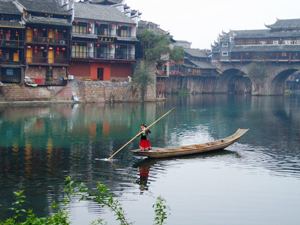
Boating on Tuo River.
Tuo River is the mother-like river in Fenghuang Ancient Town. It breeds the local people for generations. Seating on the boat, visitors can enjoy the work song of the boatman in tranquility and enjoy the Diaojiaolou of Tujia Family on both sides of river in mountains and water. It is another feeling and experience. On the boat, visitor can see Longevity Palace, Wanming Pagoda, Duocui Tower and so on in turn. The south side of the Tuo River is the ancient town wall built with mauve sandstone. It is elegant and gigantic. The town wall has east tower and west tower in two directions.
East-Gate Town Tower.
East-gate town tower is located in the east side of town, and it was originally called Shengheng Gate, and one of the four town gates in Fenghuang Ancient Town. It was established in 1715, the lower section of the town gate is made of the mauve sandstone, and the upper section is made of the old bricks. It is 3.5 meters wide and 4 meters high. It looks like an semi-arch.
The Former Residence of Shen Congwen.
Maybe most of people who know Fenghuang Ancient Town start from what Shen Congwen wrote. In 1902, Shen Congwen who was Chinese famous writer, historian and archeologist was born in a typical southern-style 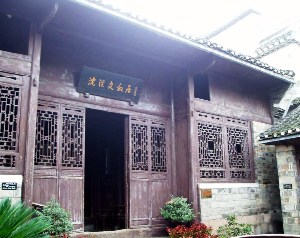 Siheyuan of Fenghuang Ancient Town. In 1866, Siheyuan was bought by Mr.Shen’s grandfather who was a high official in Qing Dynasty and acted as the top leader of Guizhou province. It was restored based on the former folk residence. The whole building is mainly built with wood. The traditional decorations and carvings are easily seen. The whole architecture is strongly featured by the architectural style of west Hunan province in Ming and Qing Dynasties. Shen Congwen was a well-known master in modern China. Mr. Shen’s childhood was spent in this ancient town. So in many of his masterpieces, readers can partially or easily find the shadow of Fenghuang Ancient Town. In 1991, his residence was ranked the list of cultural site under the province-level protection. In his Mr. Shen’s residence, his original manuscripts are available. It has been one attractions of Fenghuang Ancient Town.
Siheyuan of Fenghuang Ancient Town. In 1866, Siheyuan was bought by Mr.Shen’s grandfather who was a high official in Qing Dynasty and acted as the top leader of Guizhou province. It was restored based on the former folk residence. The whole building is mainly built with wood. The traditional decorations and carvings are easily seen. The whole architecture is strongly featured by the architectural style of west Hunan province in Ming and Qing Dynasties. Shen Congwen was a well-known master in modern China. Mr. Shen’s childhood was spent in this ancient town. So in many of his masterpieces, readers can partially or easily find the shadow of Fenghuang Ancient Town. In 1991, his residence was ranked the list of cultural site under the province-level protection. In his Mr. Shen’s residence, his original manuscripts are available. It has been one attractions of Fenghuang Ancient Town.
The Former Residence of Xiong Xiling.
The former residence of Xiong Xiling is located in a lane of North Wenxing Street in Fenghuang Ancient Town. His residence has 200 meters away from the beautiful Tuo River. The residence belongs to Siheyuan style 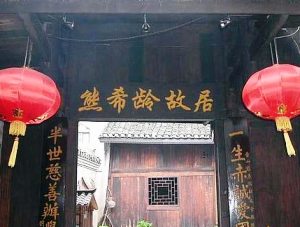 characterized of the wood-tile structure of southern China architectural style. It is small but delicate. Currently, four rooms are mostly original and themed with the features of Miao-Nationality building. It belongs to the cultural sites under the county-level protection. Xiong Xiling lived his child life here. Mr. Xiong in his childhood was acclaimed to be the Wonder Child of Hunan. He was ranked Xiucai at 15, Juren at 22 and Jinshi at 25. In 1913, Xiong Xiling acted as the first Primer Minister elected by the public. He later was forced to resign because he opposed the re-feudalization of Yuan Shikai administration. In his rest life, Mr. Xiong engaged in philanthropy and education. in 1937, his national hero died in Hong Kong at the age of 68.
characterized of the wood-tile structure of southern China architectural style. It is small but delicate. Currently, four rooms are mostly original and themed with the features of Miao-Nationality building. It belongs to the cultural sites under the county-level protection. Xiong Xiling lived his child life here. Mr. Xiong in his childhood was acclaimed to be the Wonder Child of Hunan. He was ranked Xiucai at 15, Juren at 22 and Jinshi at 25. In 1913, Xiong Xiling acted as the first Primer Minister elected by the public. He later was forced to resign because he opposed the re-feudalization of Yuan Shikai administration. In his rest life, Mr. Xiong engaged in philanthropy and education. in 1937, his national hero died in Hong Kong at the age of 68.
Yang-Family Ancestral Memorial.
Yang-family ancestral memorial was built in 1836. the building is made of wood and shown in the style of Siheyuan. The memorial is comprised of two stories with the total area of 770 square meters. The buildings include the gate, opera stage, corridors, main hall and subsidiary rooms this memorial is located near to the ancient town wall in north side of the town. It is strongly showing the local tradition and carving art of architecture. Currently it is the cultural site under the county-level protection.
Southern Great Wall.
Chinese southern great wall was built in 1554 and finished in 1622. the southern great wall starts from Tingziguan in south to Xiqueying in north with the total length of 191,000 meters. It is called The Tens of Thousands of 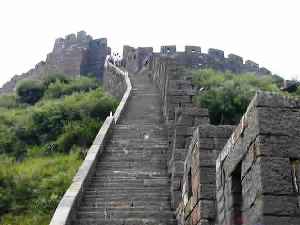 Miles Wall in Miao-Nationality area. It is also one of the greatest projects in Chinese history. Most sections of southern great wall go through Fenghuang Ancient Town. The great wall has 3 meters high and 2 meters wide in bottom. Most of the great wall was built on the steep ridges. It surrounds the mountains and strides the rivers. There are a lot of passes, emplacements, sentries and other defensive buildings, roughly 800 used for soldier stationing and defense. In Ming Dynasty, the local people of Miao Nationality were divided into Strange Miao-Nationality People and Familiar Miao-Nationality People. Generally, Strange Miao-Nationality People disobeyed the administration of central government, and they could not bear the suppression of government and rebelled against the government, so for stabilizingm government of Ming Dynasty built this great wall to separate two kinds of people of Miao Nationality. But such a defensive project was not so useful as planned. The stones of the great wall were gradually removed by the local people to build houses. Great Wall of Miao Nationality is for sure a part of Chinese great wall and should be listed in the world cultural heritage together with north great wall.
Miles Wall in Miao-Nationality area. It is also one of the greatest projects in Chinese history. Most sections of southern great wall go through Fenghuang Ancient Town. The great wall has 3 meters high and 2 meters wide in bottom. Most of the great wall was built on the steep ridges. It surrounds the mountains and strides the rivers. There are a lot of passes, emplacements, sentries and other defensive buildings, roughly 800 used for soldier stationing and defense. In Ming Dynasty, the local people of Miao Nationality were divided into Strange Miao-Nationality People and Familiar Miao-Nationality People. Generally, Strange Miao-Nationality People disobeyed the administration of central government, and they could not bear the suppression of government and rebelled against the government, so for stabilizingm government of Ming Dynasty built this great wall to separate two kinds of people of Miao Nationality. But such a defensive project was not so useful as planned. The stones of the great wall were gradually removed by the local people to build houses. Great Wall of Miao Nationality is for sure a part of Chinese great wall and should be listed in the world cultural heritage together with north great wall.
Huangsiqiao Ancient Town.
Huangsiqiao ancient town was built in 687 roughly in Tang Dynasty. After the restorations from Song Dynasty to Qing Dynasty as well as the local governmental protection, it formed the appearance of the stone town. 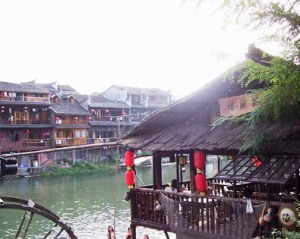 Historically it was used for stationing troops. This town was mainly made of the green stone. The town wall is 5.6 meters high, 2.4 meters high and the length from east to west is 153 meters and the length from south to north is 190 meters. The total area is 2900 square meters. The ancient town has three gates. Three gates all have the town towers with different names. In 1983, this town was ranked the list of cultural sites under the province-level protection.
Historically it was used for stationing troops. This town was mainly made of the green stone. The town wall is 5.6 meters high, 2.4 meters high and the length from east to west is 153 meters and the length from south to north is 190 meters. The total area is 2900 square meters. The ancient town has three gates. Three gates all have the town towers with different names. In 1983, this town was ranked the list of cultural sites under the province-level protection.
Shanjiang Village of Miao Nationality.
This village is located in a canyon 20 kilometers away from Northwest Fenghuang Ancient Town. Shanjiang village is strongly featured by lifestyle and custom of Miao Nationality people. Jiangshan Village in Miao Nationality language was called Bagu which means Toad Cave, because near to the village, there is a cave with a lot of toads. Why is it called Shanjiang? That was the reason that after liberation in 1949, a reservoir named Shanjiang 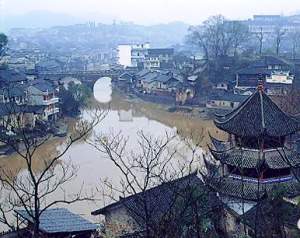 was built. This village is short of water, so it was widely welcomed and local people renamed it Shanjiang. Currently Shanjiang village still keeps the old custom of Miao Nationality. Over there, visitors can see the vivid and beautiful costumes of Miao Nationality, and many local customs such as Door-Block Wine, Road-Block Song, Folk Song, and varieties of local festivals.
was built. This village is short of water, so it was widely welcomed and local people renamed it Shanjiang. Currently Shanjiang village still keeps the old custom of Miao Nationality. Over there, visitors can see the vivid and beautiful costumes of Miao Nationality, and many local customs such as Door-Block Wine, Road-Block Song, Folk Song, and varieties of local festivals.
Besides, there are a large number of other famous scenic spots such as Tuojiang Diaojiaolou, North Gate Ancient Town Tower, Tianxing Mountain, Qiliang Cave and Mengdong River.
Local Attractions
The popular local cuisine include: Fenghuang Ginger Sugar, Bean-curd Boiled with Sour Soup, Sour Fish of Miao-Nationality Family, Vegetable Bean-curd of Farmer Family, Xiangxi Ciba, Xiangxi Preserved Ham and Fenghuang Sour Carrot and so on. The welcomed local products are Xuebaya, Sweet Orange, Brocade of Tujia Nationality, chest-nut and tine-nut, Gefeng or Arrowroot Flour, Gingko, Pangolin, Giant Salamander, Chinese goosebeery and wax-dyeing and so on. By the way, the local brocade-making, wax-dyeing and silver accessory-making techniques are special. They have the high value of art appreciation. Visitors who interested in can go there for a further investigation. It is an essential part of Hunan Embroidery, which is one of top-four most famous embroideries in China.
The operas of Fenghuang Ancient Town are the gem of the local folk tradition and culture. Generally the local operas are Nuotang Opera, Chadeng Opera and Yang Opera. Nuotang Opera is a dancing-style opera themed with driving away epidemic disease and evilness as well as praying for greeting and auspiciousness. It is the oldest and most original opera for sacrificing to god in local area. Chadeng Opera or Tea-Lamp Opera is themed with harvest celebration. It highly praises the life and love. Yang Opera generally is performed in January. It is easily understandable and popular in local area. The most famous traditional festivals in Fenghuang Ancient Town include: Dragon-Boat Festival, Middle-Autumn Festival, and Double-Nine Festival as well as Lunar New Year. The customs are similar to those in other places. Go to market of Miao Nationality is another famous local tradition. Local people call it Ganchang. Go to market with local people together is another unique experience. Visitors not only can get many local products but also feel the local strong custom.
Travel Tips of Fenghuang Ancient Town
1. Don’t enter the house of local family with the unfolded umbrella.
2. Don’t step on the doorsills of the house of local family at will.
3. To be the guests of the local family, the man and woman should not live in the same room.
4. Invited to have dinner in local family, guests can not step on the tripod of utensil of the local family and never sit on the main seat of the hall, because it blocks the direction of tabernacle.
5. Never keep in close touch with the married women in residential area of Miao nationally.
6. Don’t whistle at will in the residential area of Miao Nationally and Tujia Nationality, because locally it is the sound for calling ghosts together.
7. Additionally, before you enter the ancient town, you had better make a full preparation of paper money, because in the ancient town of Fenghuang, the coins are unpopular.
